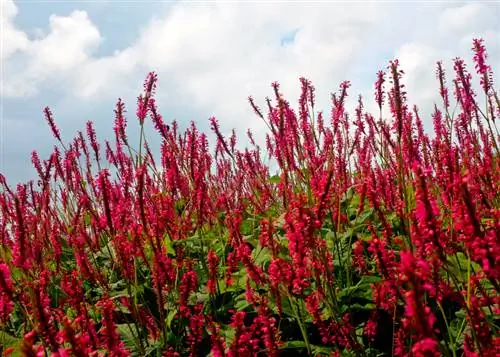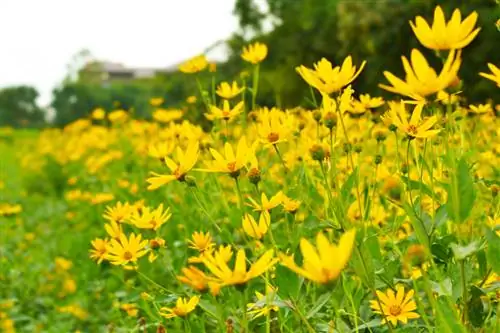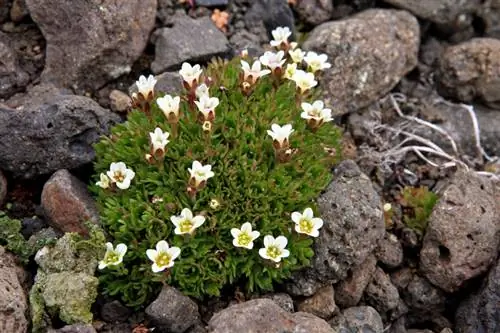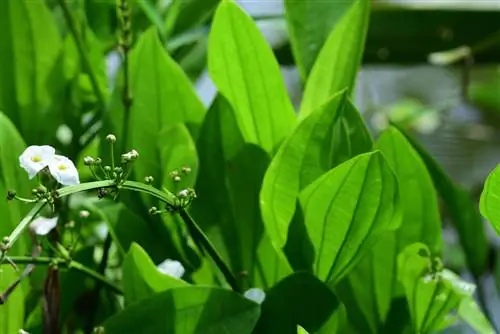- Author admin [email protected].
- Public 2023-12-16 16:46.
- Last modified 2025-06-01 06:02.
The knotweed family (Polygonaceae) is an immensely large one: the estimated 48 genera and over 1200 different varieties are widespread all over the world. Native, well-known species include rhubarb and buckwheat, a pseudo-cereal. What all knotweeds have in common is their immense growth rate, which is an advantage on the one hand, but also a serious disadvantage on the other. At this point we will introduce you to the most important knotweed species for your home garden.

Which types of knotweed are suitable for the home garden?
Common knotweed species in the home garden are creeper knotweed (Fallopia baldschuanica) as a climbing plant, piebald knotweed (Bistorta affinis) as a ground cover and meadow knotweed as a perennial. Japanese knotweed (Fallopia japonica) is considered a dreaded weed and is banned in some countries.
Knotweed as a climbing plant
A well-known and equally popular and feared climbing plant is the creeping knotweed (Fallopia baldschuanica), which belongs to the winged knotweed family. This climbing plant is one of the strongest climbing plants and can grow up to eight meters high - and just as wide - within just one year. Climbing knotweed is perfect for greening large areas, but it requires a lot of space and is also very destructive.
Knotweed as a ground cover
If, on the other hand, you are looking for an extensive ground cover that forms dense carpets, the piebald knotweed (Bistorta affinis) may be the right choice for you. However, this type of knotweed is not only very willing to bloom - the pink flower spikes can be admired between July and September - but, like all knotweeds, it is also very keen to grow. Here, too, it is important to keep a close eye on growth and spread and, if necessary, contain it in a timely manner.
Knotweed as a perennial
Meadow knotweed can be cultivated on moist soils - for example near a pond or watercourse as well as on wet meadows. This species, also known as snake knotweed, grows to a maximum height of 80 centimeters and is decorated with dense foliage and pretty pink or white flower spikes. Both the leaves and the young shoots of the meadow knotweed can be prepared as a vegetable, while the roots have been used since ancient times to produce a natural anti-diarrhea remedy.
Dreaded Weed: Japanese Knotweed
In both Switzerland and Great Britain, planting Japanese knotweed (Fallopia japonica), often referred to as Japanese knotweed, is prohibited even in private gardens - the difficult-to-control plant poses too much of a threat to native vegetation, which simply suppresses it. The neophyte reproduces very quickly via so-called creeping shoots and can only be removed if all roots and even the smallest root components are removed without leaving any residue.
Tips & Tricks
Like the meadow knotweed, the young shoots of the Japanese knotweed are edible as vegetables.






